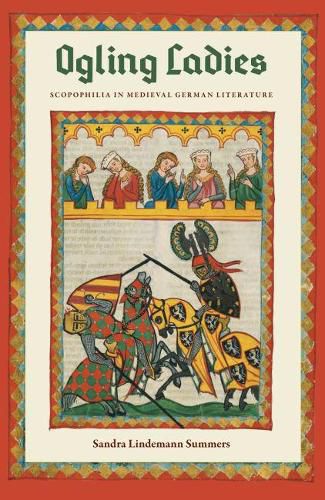Readings Newsletter
Become a Readings Member to make your shopping experience even easier.
Sign in or sign up for free!
You’re not far away from qualifying for FREE standard shipping within Australia
You’ve qualified for FREE standard shipping within Australia
The cart is loading…






This title is printed to order. This book may have been self-published. If so, we cannot guarantee the quality of the content. In the main most books will have gone through the editing process however some may not. We therefore suggest that you be aware of this before ordering this book. If in doubt check either the author or publisher’s details as we are unable to accept any returns unless they are faulty. Please contact us if you have any questions.
In the European Middle Ages, the harm a person’s gaze could cause was greatly feared. A stare was considered an act of aggression; intense gazing was believed to exert immense power over the individual observed.
The love of looking, or scopophilia, is a common motif among female figures in medieval art and literature where it is usually expressed as a motherly or sexually interested gaze–one sanctioned, the other forbidden. Sandra Summers investigates these two major variants of female voyeurism in exemplary didactic and courtly literature by medieval German authors. Setting the motif against the period’s dominant patriarchal ethos and its almost exclusive pattern of male authorship, Summers argues that the maternal gaze was endorsed as a stabilizing influence while the erotic gaze was condemned as a threat to medieval order.
Summers examines whether medieval artists and writers invented the idea of
ogling,
or whether they were simply recording a behavioral practice common at the time. She investigates how the act of ogling altered the narrative trajectory of female characters, and she also considers how it may have affected the regulation and restriction of women during Europe’s Middle Ages.
Drawing upon contemporary gender studies, women’s studies, film studies, and psychology, Summers argues that the female gaze ultimately governs social formation. The exploration of the female gaze in period literature transcends medieval scholarship and impacts our understanding of the broader problem of gender perceptions and social structuring in Western civilization.
$9.00 standard shipping within Australia
FREE standard shipping within Australia for orders over $100.00
Express & International shipping calculated at checkout
This title is printed to order. This book may have been self-published. If so, we cannot guarantee the quality of the content. In the main most books will have gone through the editing process however some may not. We therefore suggest that you be aware of this before ordering this book. If in doubt check either the author or publisher’s details as we are unable to accept any returns unless they are faulty. Please contact us if you have any questions.
In the European Middle Ages, the harm a person’s gaze could cause was greatly feared. A stare was considered an act of aggression; intense gazing was believed to exert immense power over the individual observed.
The love of looking, or scopophilia, is a common motif among female figures in medieval art and literature where it is usually expressed as a motherly or sexually interested gaze–one sanctioned, the other forbidden. Sandra Summers investigates these two major variants of female voyeurism in exemplary didactic and courtly literature by medieval German authors. Setting the motif against the period’s dominant patriarchal ethos and its almost exclusive pattern of male authorship, Summers argues that the maternal gaze was endorsed as a stabilizing influence while the erotic gaze was condemned as a threat to medieval order.
Summers examines whether medieval artists and writers invented the idea of
ogling,
or whether they were simply recording a behavioral practice common at the time. She investigates how the act of ogling altered the narrative trajectory of female characters, and she also considers how it may have affected the regulation and restriction of women during Europe’s Middle Ages.
Drawing upon contemporary gender studies, women’s studies, film studies, and psychology, Summers argues that the female gaze ultimately governs social formation. The exploration of the female gaze in period literature transcends medieval scholarship and impacts our understanding of the broader problem of gender perceptions and social structuring in Western civilization.